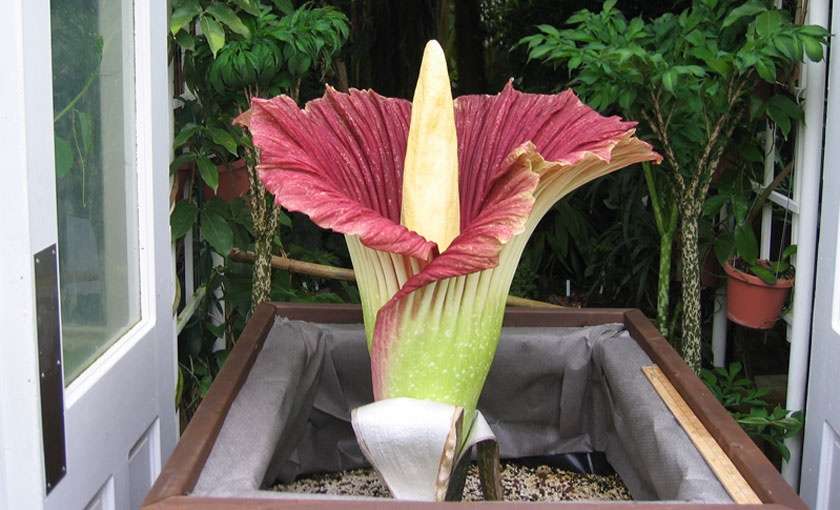
Each Amorphophallus titanum leaf, which appears to be a little tree while it is vegetative, is actually a single umbrella-shaped leaf. The petiole, or leaf stem, is covered in branch-like rachis that support the many leaflets.
Growing Conditions

Light
Since these plants grow in the understory of forests in the natural, they would require strong indirect light, or at most dappled sun.
Humidity and Temperature
These plants prefer 70 to 90% humidity because they are native to the Sumatran jungle. Make sure to keep corpse flowers from getting much colder than 60 F (18 C). Ideal daytime temperatures should range from 24 to 32 C (75 to 90 F). The one leaf that the corpse flower produces, albeit enormous, is all there is! The petiole and leaf will decay away at the conclusion of each growing season. Now is the time to remove the corm from the pot, wash the soil off, and repot it in a bigger pot. Avoid nicking the corm or it will rot. According to legend, the plant won’t begin to bloom until the corm weighs 40–50 pounds (18–23 kg).
Watering
Never let a corpse flower totally dry out as this can cause it to become dormant. Water it once again after letting the surface dry up a little. On the other hand, avoid letting this plant become overly moist or sit in water.
Space
Make sure you have enough space to cultivate this plant. Depending on the conditions you provide, it can grow to a height of 10 feet (3 metres) or more per year.
Fertilizer
During the growing season, you can fertilize (diluted) with each watering. During the active growing season, you can top-dress with an organic fertilizer a few times if you’d like. When development slows towards the conclusion of the growing season, stop fertilizing.
Table





